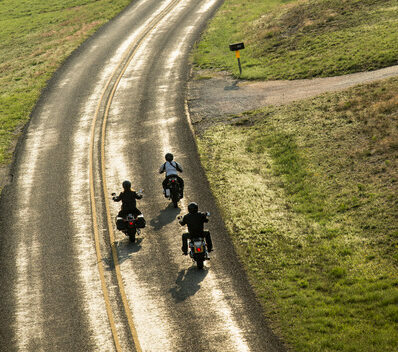
In the 1980s, scooters and mopeds enjoyed brisk sales and became a popular way for getting around town. But the demand for these low-cost rides seemed to disappear almost immediately, thanks, in part, to more economical cars and falling gas prices.
Recent years have seen consumers revisiting the idea of hitting the street on two wheels. With an affordable price tag, good gas mileage and low maintenance costs, scooters and mopeds are enjoying a renaissance of sorts. Today, riders can find more sizes, styles and colors than ever before.
“We see a lot more men than women buying them,” says Oscar Hernandez of My Scooters and ATVs in Arlington, Texas. “But it’s really all ages, anything from 16 to 35 years old.”
Hernandez credits a broader selection of body styles, along with affordability, for the newfound popularity.
“Part of it is because when the price of gas went up, it was much more economical – you can get 80 to 100 miles a gallon,” Hernandez explains. “But the scooter itself is more affordable, too.”
Size makes a difference
While mopeds and scooters are similar, there are certain differences that legally distinguish the two. Models that have 50 cubic centimeters of displacement (50cc) or below qualify as mopeds, while scooters can have as much as 250cc. While motorcycles engine sizes start at 250cc, many novice riders prefer to start out on a scooter because it has an automatic transmission instead of the more complicated clutch lever/shifter pedal combination found on a motorcycle.
“If you’re just starting out, though, you want to start with a smaller engine,” Hernandez advises. “I would tell anyone who is starting out to drive a 50cc model until they get more experienced.”
Keep in mind there are a few legalities involved in hopping on a scooter. In many states, drivers who pass a written test can take to the streets at the age of just 15, shaving a year off the required time in some states to get behind the wheel of a car. Anyone with a regular driver’s license can drive a moped, and some states also allow moped drivers to get their license at age 14. Unlike scooter and motorcycles, mopeds are allowed to use designated bicycle lanes – but not sidewalks. However, unlike scooters and motorcycles, they’re allowed to use designated bicycle lanes.
Overall, scooters face stricter laws than mopeds. To qualify as a scooter, it must be 50cc or larger, require shifting gears and able to hit speeds in excess of 30 miles an hour. Qualifying as a scooter also means the driver will need to have a Class M motorcycle license to be street legal. Check to see your state’s particular requirements for licensing, as requirements can vary from state to state.
Choosing your ride
Selecting the scooter that’s right for you is much like choosing a car. You’ll need to think about how it’s going to be used and what kind of roads you’ll drive on. For example, if you’re looking to buy a two-wheeler just to commute to work and it’s a short ride with fairly heavy traffic, you don’t need a lot of speed – so a moped could do the trick. But if you have your heart set on hitting highway speeds, turn your attention to a larger engine to do the job.
Also, regardless of what you choose, make sure you double check all licensing and insurance requirements in your state before you buy. As with motorcycles, you’ll want to always wear a helmet – even if state law doesn’t require it – and make sure you wear brightly colored clothing because two-wheeled riders can be harder for drivers in cars to see.



